What I bought: March 8, 2006
Teen Titans #33: Road trip! Between Infinite Crisis #5 and #6, Superboy and Nightwing have to get from San Francisco to the Arctic. This is that story. Important? No. Great story? No. Worth reading? Yes.
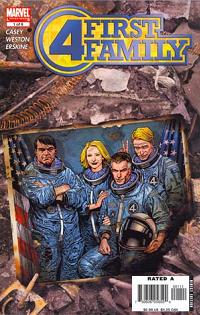 Fantastic Four: First Family #1: If you enjoyed the Avengers: Earth’s Mightiest Heroes mini-series from the end of 2004 (also written by FF:FF’s Joe Casey), you’ll like this book. It’s essentially the same thing: a story of the Fantastic Four in their very early days that fits nicely into continuity without changing anything and without requiring that the reader knows that continuity.
Fantastic Four: First Family #1: If you enjoyed the Avengers: Earth’s Mightiest Heroes mini-series from the end of 2004 (also written by FF:FF’s Joe Casey), you’ll like this book. It’s essentially the same thing: a story of the Fantastic Four in their very early days that fits nicely into continuity without changing anything and without requiring that the reader knows that continuity.
Son of M #4: Quicksilver starts giving ex-mutants wiffs of the Terrigen Mists. He travels to Genosha first, and gives one to Callisto. Callisto goes psycho from her new super-senses going overboard, and drops at the feet of Magneto. And daddy’s pissed. The art continues to be great, and the pace is really picking up now that Pietro’s back on Earth. I can’t wait to see a de-powered Magneto/Quicksilver fight. Somehow Callisto losing her mutant powers also caused her to lose her sweet tentacle arms, which weren’t part of her powers. Her arms were reformed on a genetic level by Masque, although if Masque lost her powers, assuming she was a mutant (I’m not very familiar with the character), that might explain it. Regardless, it sucks, because tentacled Callisto was awesome.
New X-Men #24: They suckered me in for another issue with a great ending to the last one (William Stryker shoots a missile at a bus-full of ex-mutants leaving Xavier’s), and the fact that this was a light week. The series continues to be decent, but not spectacular by any means. Whether I pick up the next issue will probably depend on how much I’m spending that week.
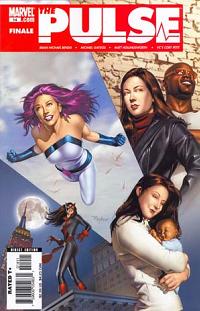 The Pulse #14: The Pulse is the only series written by Brian Michael Bendis that I’ve ever enjoyed, and it’s because it’s him doing what he does best: writing about normal people (or at least abnormal people acting like normal people) doing normal things. The best part of the series was the D-Man/Ben Urich story that ran over the last few issues, because it wasn’t Bendis trying (and failing) to write an epic event, just something relatively common that’s probably happened to a great deal of people in Marvel’s NYC. I like these books that are about regular people living in a superhero world, like Gotham Central. Unfortunately, also like Gotham Central, The Pulse is cancelled with this issue.
The Pulse #14: The Pulse is the only series written by Brian Michael Bendis that I’ve ever enjoyed, and it’s because it’s him doing what he does best: writing about normal people (or at least abnormal people acting like normal people) doing normal things. The best part of the series was the D-Man/Ben Urich story that ran over the last few issues, because it wasn’t Bendis trying (and failing) to write an epic event, just something relatively common that’s probably happened to a great deal of people in Marvel’s NYC. I like these books that are about regular people living in a superhero world, like Gotham Central. Unfortunately, also like Gotham Central, The Pulse is cancelled with this issue.
X-Men: The 198 #3: This mini-series has gone way downhill since the first issue. I have no clue what this series is about anymore, as the guy it seemed to be centered on in the first issue (Mr. M) is barely in it anymore. That guy with the weird monster in his chest is killing people, though. That’s sort of interesting, but I’d consider this issue the worst of the week by far.
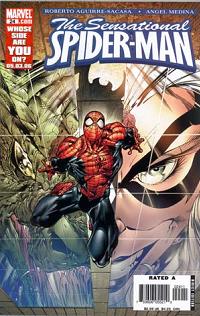 Sensational Spider-Man #24: Roberto Aquirre-Sacasa isn’t a bad writer, but nothing he’s done has gotten me very excited at all. Not even when he writes my favorite character. Angel Medina’s art is strikingly McFarlane-esque, which is by no means a compliment. If the art wasn’t so bad, the quality of the writing probably wouldn’t show through so easily. The story isn’t something that’s particularly original. What’s happened to Marvel Knights/Sensational Spider-Man is remarkably similar to what happened when Peter Milligan took over X-Men from Chuck Austen: Aguirre-Sacasa/Medina isn’t any better than Hudlin/Tan/Lee, just different, and it may just be worse.
Sensational Spider-Man #24: Roberto Aquirre-Sacasa isn’t a bad writer, but nothing he’s done has gotten me very excited at all. Not even when he writes my favorite character. Angel Medina’s art is strikingly McFarlane-esque, which is by no means a compliment. If the art wasn’t so bad, the quality of the writing probably wouldn’t show through so easily. The story isn’t something that’s particularly original. What’s happened to Marvel Knights/Sensational Spider-Man is remarkably similar to what happened when Peter Milligan took over X-Men from Chuck Austen: Aguirre-Sacasa/Medina isn’t any better than Hudlin/Tan/Lee, just different, and it may just be worse.
Cable & Deadpool #26: I like when this series has less Cable and more Deadpool. Maybe that’s because Nicienza’s better at writing humor (Deadpool) than drama (Cable). There was an interesting twist at the end though: Cable, who came back in time to kill Apocalypse to prevent his own dystopian future from coming to be, may be involved in a plot to bring Pocy back from the dead. It’s set before the X-Men arc, naturally.
 Thunderbolts #100: Finally, back to it’s original title (it’s officially dropped the “New”) and original numbering (not really a big deal, but there aren’t many titles above #100 nowadays). The story was decent, but kind of confusing. So Zemo’s responsible (unintentionally) for Genis going crazier lately, and Zemo’s gang of T-Bolts wants to take out Genis so he doesn’t destroy the universe, which will happen in every possible future in which he’s not taken out (they’re not technically killing him, so there’s really not a better way of putting that). Songbird’s T-Bolts oppose them, but ultimately allow Zemo to imprison Genis inside of Blackout/the Darkforce dimension. In the end, it turns out that Songbird may have been working with Zemo all along to help convince everybody that “killing” Genis was the right thing to do (or something), and then Songird and Zemo kiss. What?! I love that the entire series so far has been one big mega-arc, and I’m glad everything wasn’t neatly resolved in one issue. Everything gets tied up so quickly in most comics that it’s great to see an old-school type of storytelling every now and again. There were also a few reprints in the back of the book from the very early days of the T-Bolts, which (unfortunately) were actually better than the new story. Fabian Nicienza is no Kurt Busiek. It’s been nearly ten years since I’d read those reprinted stories, and it makes me want to break out the entire series and re-read it.
Thunderbolts #100: Finally, back to it’s original title (it’s officially dropped the “New”) and original numbering (not really a big deal, but there aren’t many titles above #100 nowadays). The story was decent, but kind of confusing. So Zemo’s responsible (unintentionally) for Genis going crazier lately, and Zemo’s gang of T-Bolts wants to take out Genis so he doesn’t destroy the universe, which will happen in every possible future in which he’s not taken out (they’re not technically killing him, so there’s really not a better way of putting that). Songbird’s T-Bolts oppose them, but ultimately allow Zemo to imprison Genis inside of Blackout/the Darkforce dimension. In the end, it turns out that Songbird may have been working with Zemo all along to help convince everybody that “killing” Genis was the right thing to do (or something), and then Songird and Zemo kiss. What?! I love that the entire series so far has been one big mega-arc, and I’m glad everything wasn’t neatly resolved in one issue. Everything gets tied up so quickly in most comics that it’s great to see an old-school type of storytelling every now and again. There were also a few reprints in the back of the book from the very early days of the T-Bolts, which (unfortunately) were actually better than the new story. Fabian Nicienza is no Kurt Busiek. It’s been nearly ten years since I’d read those reprinted stories, and it makes me want to break out the entire series and re-read it.
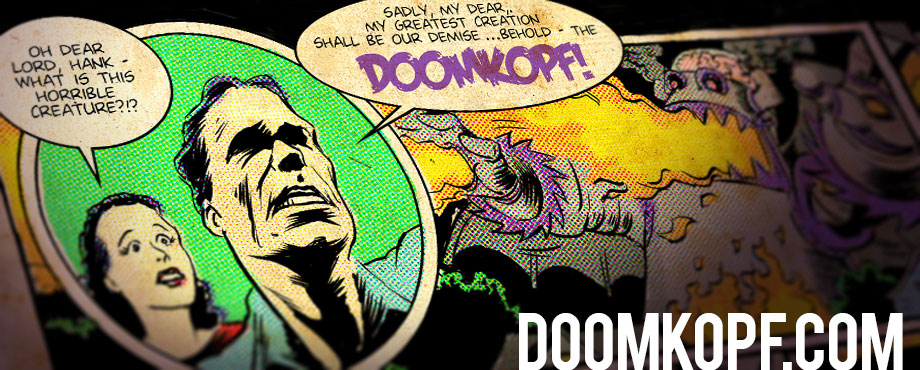


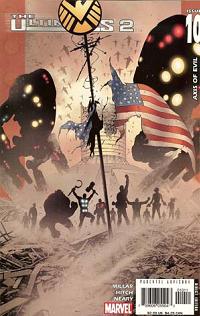


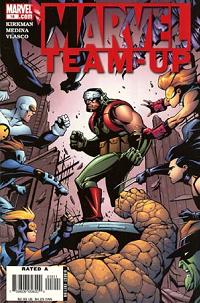
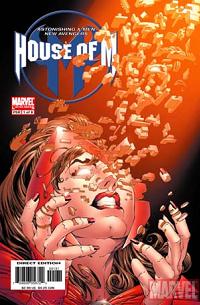
 The Rann-Thanagar War miniseries has been quite maligned in these parts and elsewhere, largely because of its apparent irrelevance. The only real Crisis moment came at the conclusion of the series, and seemed completely unrelated to the events of the miniseries. While recent exposition has shown that incidents leading to the war were much more closely tied to the Crisis than initially believed, Superboy moving the planet and causing a war just doesn’t really seem like it’s going to satisfy the haters.
The Rann-Thanagar War miniseries has been quite maligned in these parts and elsewhere, largely because of its apparent irrelevance. The only real Crisis moment came at the conclusion of the series, and seemed completely unrelated to the events of the miniseries. While recent exposition has shown that incidents leading to the war were much more closely tied to the Crisis than initially believed, Superboy moving the planet and causing a war just doesn’t really seem like it’s going to satisfy the haters. I don’t have a clever title for this or a clever lede, but I’ve finally found something to get me into that whole manga world.
I don’t have a clever title for this or a clever lede, but I’ve finally found something to get me into that whole manga world.